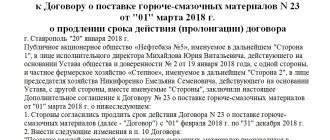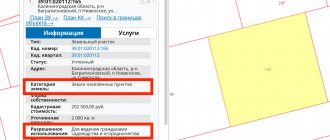What is the difference between separable improvements and inseparable ones?
The separability and inseparability of improvements depends on whether or not the leased asset will lose its properties if these improvements are withdrawn (Clause 2 of Article 623 of the Civil Code of the Russian Federation).
Accordingly, the difference between separable and inseparable improvements is that the former maintain the performance of the asset, and the latter create new properties and functions for the asset or modernize it. However, not all so simple. From the point of view of an owner who wants to maintain a rental asset in working order, for example, replacing old doors and floors with new ones could well be considered as renovation costs with subsequent capitalization. These expenses are aimed at extending the useful life of the asset, although they do not change its useful area and do not create new characteristics. A similar position was expressed by the Russian Ministry of Finance (letter dated February 29, 2014 No. 07-04-18/01). But it is important to understand that if, after the improvements made, the useful area or volume of the asset changes, then its value as an item of fixed assets should also increase (resolution of the AS of the West Siberian District dated March 18, 2019 No. F04-641/2019 in case No. A46-8255/ 2018).
Thus, according to established practice and the essence of the definition, inseparable improvements are the result of capital work performed by the tenant or contractor, and separable improvements are independent things that can be used separately from the leased property. In other words, this is something that the tenant can take with him without damaging the rental item.
However, judicial precedents on this issue are diverse and unpredictable: when and under what circumstances can inseparable improvements pass to the owner beyond his original decision?
For example, if a tenant installs partitions and air conditioners, but after the termination of the lease agreement decides to remove them, then the court may refuse him this, because they cannot be dismantled without harm to the leased premises (Determination of the Supreme Court of the Russian Federation dated April 10, 2017 No. 309-ES17- 2544).
The issue of separability of objects related to electrical supply and air conditioning systems of buildings is really not so simple. If a tenant installs electrical panels, air conditioning units and a sign in a leased asset that was originally equipped with its own electrical and air conditioning system, then dismantling them will require intervention in the utility systems of the entire building. Therefore, such improvements will be recognized as inseparable (decision of the Supreme Court of the Ulyanovsk region dated May 13, 2016 in case No. A72-16150 /2015, resolution 5AAS dated July 8, 2015 in case A51-27347/2014, decision of the RT Court dated April 14, 2015 in case A65-17489 /2013, resolution of the Federal Antimonopoly Service of the Central District dated 04/07/2011 in case A14-5963/2010).
These types of improvements change the functionality of the rental asset, just like a remodel. For example, if a company leases an asset to house a cafe and adds a toilet for customers with limited mobility or for customers with children to the existing toilets, then such improvements should be considered as inseparable. Of course, after the end of the lease period, it will be possible to disassemble everything and return the premises to its original appearance, but this will require repeated intervention in the communications of the entire building, and the owner of the asset will most likely not take this step.
And even the most ordinary replacement of old double-glazed windows and doors with new ones in a rented premises can become a subject of controversy. At first glance, it appears that these improvements can be separated at the end of the lease without compromising the integrity of the office. However, if windows and doors were considered part of the property before the lease was concluded, then replacing them is simply an upgrade to an integral part of that property. In this regard, it is more logical to consider the replacement of double-glazed windows and doors as inseparable improvements (Resolution of the Presidium of the Supreme Arbitration Court of the Russian Federation dated October 26, 1999 No. 3655/99). Of course, it is possible to appoint an examination to determine whether the improvements are separable, but experts issue opposite conclusions (Resolution of the Federal Antimonopoly Service of the North-Western District dated March 28, 2013 No. F07-314/13 in case No. A42-7628/2011).
In the absence of a single strict algorithm for distinguishing between separable and inseparable improvements, it is necessary in each case to consider the costs incurred on their merits and from the point of view of the presence of consequences for the leased asset: its functions will change or simply be superficially updated.
Determination by the lessee of the useful life of inseparable improvements
In this article, we will analyze some practical issues that may arise in connection with the determination by the tenant of the useful life of inseparable improvements.
Determination of useful life (hereinafter referred to as SPI) for tax accounting.
In preparing this article, we were guided by the assumption that the improvements made by the tenant were agreed upon with the landlord. The procedure for reflecting inseparable improvements in the tenant's tax accounting depends on the terms of the lease agreement, as specified in clause 1 of Art. 258 of the Tax Code of the Russian Federation (hereinafter referred to as the Tax Code of the Russian Federation).
Option No. 1. The contract provides for the landlord’s obligation to fully compensate for the costs of inseparable improvements.
Inseparable improvements are not depreciated, since their cost is taken into account as expenses associated with the performance of work for the lessor (paragraph 5, paragraph 1, article 258 of the Tax Code of the Russian Federation and letter of the Ministry of Finance of Russia dated 04/05/2017 No. 03-03-06/1/20242) . Accordingly, there is no need to determine the SPI in such a situation, because these improvements will not be subject to depreciation.
Option No. 2. The contract does not provide for the landlord’s obligation to compensate for the costs of inseparable improvements.
The tenant takes into account such expenses through the depreciation mechanism (clause 1 of Article 258 of the Tax Code of the Russian Federation and letter of the Ministry of Finance of Russia dated March 21, 2011 No. 03-03-06/1/158).
The amount of depreciation can be calculated based on the SPI established in the Classification of Fixed Assets (hereinafter referred to as the Fixed Assets) (approved by Decree of the Government of the Russian Federation dated January 1, 2002 No. 1) for a leased object or capital investments in this object. A similar position is reflected in the decision of the Central District Court of December 6, 2018 in case No. A62-8660/2016. Based on the system analysis of paragraph. 6 clause 1 and clause 6 art. 258 of the Tax Code of the Russian Federation, we have concluded that the SPI of inseparable improvements can be determined in one of the following ways:
− on the basis of the SPI of the fixed asset object (named in the above-mentioned resolution of the Government of the Russian Federation), in which improvements have been made;
− based on the technical specifications or recommendations of the manufacturers of the property used to make improvements.
In accordance with paragraph. 6 clause 1 art. 258 of the Tax Code of the Russian Federation, capital investments in the form of inseparable improvements are depreciated by the tenant during the entire term of the lease agreement (letters of the Ministry of Finance of Russia dated July 31, 2018 No. 03-03-06/1/53831 and dated February 22, 2013 No. 03-03-06/2/ 5003). A similar conclusion is contained in the decisions of the Administrative Court of the East Siberian District dated 03/04/2019 in case No. A58-752/2018, the Administrative Court of the West Siberian District dated 07/07/2016 in case No. A45-11835/2015 and 5 AAS dated 02/20/2019 in case No. A51-15284/2018. After the expiration of the contract, the tenant does not have the right to take into account the residual cost of inseparable improvements in expenses (Resolution 9 of the AAS dated 01.03.2018 in case No. A40‑130944/2017 and letter of the Ministry of Finance of Russia dated 03.08.2012 No. 03-03-06/1/384) .
Option No. 3. The agreement does not provide for the landlord’s obligation to compensate for expenses, but after termination of the agreement, the lessor, receiving inseparable improvements, transfers funds to the tenant in the amount of their residual value.
In such a situation, the paid transfer of inseparable improvements upon expiration of the lease agreement is recognized as a purchase and sale transaction, because the ownership of these improvements is being realized. Thus, if the lessor compensates for part of the costs of inseparable improvements (payment for a purchase and sale transaction), then the lessee has the right to depreciate the rest during the lease term (letter of the Ministry of Finance of Russia dated July 30, 2010 No. 03-03-06/2/ 134 and the resolution of the FAS ZSO dated May 30, 2014 in case No. A45‑12766/2013). We are not aware of the existence of more current judicial practice on a similar situation.
Consequently, during the lease term, the lessee depreciates inseparable improvements, and after termination of the lease and the transfer of these improvements for compensation, he has the right to take into account their residual value as expenses.
Separate accounting of expenses for inseparable improvements and finishing.
Expenses incurred by the tenant for finishing, in other words, current (cosmetic) repairs, can be taken into account for tax purposes in the manner established by Chapter 25 “Organizational Profit Tax” of the Tax Code of the Russian Federation (letter of the Ministry of Finance of the Russian Federation dated 01.08.2011 No. 03-03-06/1 /442 and Federal Tax Service of Russia for Moscow dated October 11, 2012 No. 16‑15/ [email protected] ).
The tenant takes into account the costs of current repairs (finishing work) of the leased premises as part of other expenses, unless the contract provides for compensation for these costs. In this case, expenses in the amount of actual costs are recognized in the tax period in which they arose (clauses 1, 2 of Article 260 and clause 5 of Article 272 of the Tax Code of the Russian Federation).
Thus, costs must be taken into account separately:
− inseparable improvements are reflected in tax accounting in the manner described earlier under this article;
− finishing work (finishing) - as part of other expenses in the amount of their actual cost. For the purposes of calculating the corporate income tax base, these expenses are taken into account at a time.
Minimum safe SPI in relation to non-separable improvements to minimize the loss of expenses in the form of depreciation within the framework of tax accounting.
Further, we were guided by the assumption that the contract does not provide for the landlord’s obligation to compensate for expenses for inseparable improvements and that the leased premises are located in Moscow and the Moscow region.
A situation may arise when, for one reason or another, it is not possible to determine the SPI of inseparable improvements based on the technical specifications or recommendations of the manufacturers of the property used to implement the improvements.
Accordingly, there remains the option of accepting the SPI of inseparable improvements based on the SPI of the fixed asset object in which the improvements were made (in this case, the fixed assets object is the building in which the inseparable improvements were made).
The taxpayer determines the useful life of the depreciable property independently, taking into account the Classification of fixed assets included in depreciation groups, which is approved by Decree of the Government of the Russian Federation of January 1, 2002 No. 1 (clauses 1, 4 of Article 258 of the Tax Code of the Russian Federation). According to paragraph 6 of Art. 258 of the Tax Code of the Russian Federation, the taxpayer establishes the useful life of fixed assets not named in this Classification in accordance with the technical conditions or recommendations of the manufacturers.
There is currently no official position regarding how the SPI of an object is determined for profit tax purposes if it is not named in the Classification of fixed assets included in depreciation groups and there is no possibility of referring to the technical specifications and recommendations of the manufacturer. Accordingly, the only legally established option is to determine the SPI of inseparable improvements based on the SPI of an object of fixed assets, that is, the fixed assets object is the building in which the inseparable improvements were made. Thus, the minimum safe useful life of inseparable improvements from the point of view of legislation is established according to the minimum limit of the depreciation group that includes the leased object in question (tenth group), which is 361 months.
Integrated improvements can only be depreciated over the term of the lease. If by the end of the lease agreement there remains an under-depreciated part of the inseparable improvements, it will not be possible to take it into account in expenses (Letters of the Ministry of Finance of Russia dated May 13, 2013 No. 03-03-06/2/16376, dated August 3, 2012 No. 03-03-06/1 /384).
An option to minimize loss of expenses in relation to inseparable improvements may be to extend the lease agreement. If the lease agreement is extended (including more than once), then improvements can be amortized over the entire term of the agreement, taking into account the extension (Letter of the Ministry of Finance of Russia dated October 25, 2011 No. 03-03-06/1/689).
It is important to renew, and not enter into a new lease agreement, since, according to the Ministry of Finance, in this case it is necessary to stop accruing depreciation on improvements (Letters of the Ministry of Finance of Russia dated 02/04/2013 No. 03-03-06/2/2269, dated 04/04/2012 No. 03-05-05-01/18).
There is both positive judicial practice (Resolution of the Autonomous Court of Moscow dated September 3, 2014 No. F05-9531/2014 in case No. A40-105354/13) and negative judicial practice (Resolution 13 of the Arbitration Court dated October 6, 2015 No. 13AP-17612/2015).
In a positive case, the Company entered into a lease agreement for a warehouse and, with the consent of the owner, made inseparable improvements to it by the contractor. The useful life of these improvements was set at 12 months.
The main complaint of the tax authorities is that the organization incorrectly determined the SPI of inseparable improvements. In their opinion, this period should be 360 months, that is, equal to the service life of the building as a whole.
The courts sided with the taxpayer and gave the following arguments.
By virtue of Art. 258 of the Tax Code of the Russian Federation, property is distributed among depreciation groups in accordance with its useful life. This is nothing more than the period during which the object serves to fulfill the objectives of the enterprise. This period is determined by the taxpayer independently on the date of putting the fixed asset into operation in accordance with Art. 258 of the Tax Code of the Russian Federation and taking into account the OS Classification. The SPI of an object of fixed assets is established by the organization when accepting it for accounting.
As stated in paragraph 4 of PBU 6/01, the useful life of an item of fixed assets is the period during which the use of the item brings economic benefits (income) to the company. Based on clause 20 of PBU 6/01, the specified period is determined by the organization when accepting an object for accounting based on:
- from the forecast period of use of this object in accordance with the expected productivity or capacity;
- from planned physical wear and tear, depending on the operating mode (number of shifts), natural conditions and the influence of an aggressive environment, the repair system;
- from regulatory and other restrictions on the use of the object (for example, the lease period).
Thus, clause 20 of PBU 6/01 does not stipulate that in accounting, organizations should be guided by any regulatory document when establishing the useful life of fixed assets.
The taxpayer’s determination of the controversial SPI for inseparable improvements (12 months) was due to the following reasons:
- firstly, the term of the lease agreement, after which the company planned to terminate this agreement in connection with the construction of its own warehouse;
- secondly, a real economic goal, which consists in using the rented property in an improved form to ensure the statutory activities of the company during the rental period.
Dividing the leased object and assigning its parts to depreciation groups, as noted, is technically impossible. Moreover, the OS Classification does not directly indicate such objects of depreciable property as capital investments in the form of inseparable improvements in leased fixed assets.
Thus, the establishment by the controllers in the appealed decision of the SPI of inseparable improvements based on the useful life of the building as a whole (360 months) contradicts clause 20 of PBU 6/01. The rental object (warehouse) in which improvements have been made is not the property of the tenant. It was only handed over to him for a certain period of time. This is precisely the period during which capital investments in leased fixed assets bring economic benefits to their owner (tenant).
In a negative case, the tax authority during the audit established that the Company had entered into a long-term lease agreement with another company for 3 years.
Under the terms of the agreement, the Lessor transfers the premises to the Tenant for temporary possession for use as warehouse space with satellite offices during the term of the agreement, and the Tenant accepts the premises.
The Lessor provided the Company with permission to carry out construction and installation work.
The court recognized the company’s arguments that the useful life of capital investments should be determined based on the lease term (3 years) as unfounded, since:
— current legislation does not provide for the taxpayer’s right to establish a useful life based on the duration of the lease agreement;
— the taxpayer did not provide evidence in the case materials that the useful life of capital investments was determined to be 3 years based on technical specifications or manufacturers’ recommendations;
— the Company’s accounting policy does not stipulate either the depreciation method or the useful life of capital investments.
The Company’s argument that the result of the work was solely the restoration of stability and operability of the leased facility is untenable, since during the inspection it was established both the direction and the connection of the construction and installation work performed on the leased facility for the construction of a turnkey office space, completion (retrofitting) with the emergence of other new qualities of the fixed asset object (office premises in warehouses). Based on the documents submitted by the taxpayer during the inspection, including approved estimates, certificates of acceptance of design work, certificates of acceptance of construction and installation work, design (executive) documentation, the Inspectorate established that the work on the completion (retrofitting) of the leased property was carried out due to the need (for the purpose of) improving the qualitative and quantitative parameters and characteristics of the facility, creating (constructing) office space on the territory of the leased facility, fire alarm equipment.
An additional basis for qualifying the work performed as completion (additional equipment) work was also the fact that the Company had developed design documentation for the work.
Under such circumstances, there were no legal grounds for calculating depreciation based on the useful life of capital investments of 3 years.
The approach proposed by the judges of the Arbitration Court of the Moscow Region to the determination of the personal investment property of inseparable improvements to the leased property, taken into account by the tenant as its own fixed assets, is an attractive, but extremely risky option for tenants, since it allows them to resolve the problem by recognizing in full the costs incurred in connection with with the production of these improvements.
Acceptance of inseparable improvements in separate parts.
In order to give an answer as to whether improvements can be accepted in separate parts, it is necessary in each individual case to take into account the totality of specific circumstances (the terms of the lease agreement, the circumstances of the creation and transfer of inseparable improvements, the characteristics of such improvements, the specifics of the activities of the lessor and the tenant, etc.) .
Civil legislation does not contain any specific rules regarding the possibility or impossibility of adopting inseparable improvements by individual parts.
Judicial practice speaks of different approaches to assessing certain improvements (No. A53-24637/2010, No. A75-3895/2013, No. A60-5892/2016).
The assessment of inseparable improvements to the leased property must take into account not only the essence of the improvement, but also the specific methods of performing (installing) such improvements. In many cases, such an assessment requires special knowledge and, accordingly, an expert opinion may be required.
For example, there are no standard diagrams of ventilation systems for residential and domestic premises due to the architectural and functional diversity of buildings. Accordingly, work on installing ventilation systems can be undertaken either immediately or in parts. The accounting procedure depends on the technical detail and complexity of the ventilation itself, as well as on the working conditions with contractors. We assume that this approach is also applicable to sewerage, fire extinguishing systems, etc.
Investment tax deduction (hereinafter referred to as INV) or depreciation bonus?
The investment tax deduction allows you to reduce the income tax at a time on expenses for acquisition, completion, additional equipment and other similar expenses (except for liquidation expenses), but only in relation to categories of fixed assets 3–7 depreciation groups, as well as on expenses for donations to certain categories of organizations.
When using the right to an investment tax deduction in the form of expenses for the acquisition and modernization of fixed assets, depreciation cannot be applied.
A taxpayer has the right to reduce the amount of corporate income tax (advance payment) subject to credit to the budget of a constituent entity of the Russian Federation for an investment tax deduction only if there is a law of that constituent entity of the Russian Federation providing for the implementation of an investment tax deduction on its territory (Letters of the Ministry of Finance of Russia dated February 20, 2018 No. 03-03-20/10674, dated 08/12/2019 No. 03-03-05/60626).
Currently, Moscow Law No. 28 dated November 20, 2019 “On investment tax deduction” has not yet entered into legal force. Thus, in Moscow the right to apply an investment tax deduction for income tax has not been established. This Law comes into force on January 1, 2021, but not earlier than one month from the date of its official publication, and becomes invalid on January 1, 2028.
Law of the Moscow Region dated July 19, 2019 No. 162/2019-OZ “On investment tax deduction in the Moscow Region” applies to legal relations that arose from January 1, 2021, and is valid until December 31, 2027 inclusive.
From January 1, 2021, the general rules for applying the investment deduction will be adjusted - they will allow an investment deduction for fixed assets that belong to 8 - 10 depreciation groups (except for buildings, structures, transmission devices) (Federal Law dated July 26, 2019 No. 210-FZ “On introducing amendments to part two of the Tax Code of the Russian Federation and certain legislative acts of the Russian Federation").
Since the object of the OS is a building in which inseparable improvements were made, even with the adoption of the Moscow law and amendments to the Tax Code of the Russian Federation, it will not be possible to use the INV.
There is an alternative option in the form of bonus depreciation, since in tax accounting it can be used by all taxpayers. If you use this right, you will be able to write off at a time as expenses the current reporting (tax) period part of the initial cost of a fixed asset or expenses incurred in cases of completion, additional equipment, reconstruction, modernization, technical re-equipment, or partial liquidation of fixed assets.
The depreciation bonus can be set at up to 30% or up to 10%, depending on the depreciation group of the fixed asset. A depreciation bonus of 30% can be applied to fixed assets of 3–7 depreciation groups. For other fixed assets, the maximum premium is 10%.
The procedure for application and the amount of the depreciation bonus should be fixed in your accounting policy for tax purposes.
In tax accounting, include the depreciation bonus as an expense in the first month of depreciation. When calculating the monthly depreciation amount, reduce the original cost of the asset by the premium.
Accounting and tax accounting of inseparable improvements to leased property
Can the tenant register a fire alarm costing 98,691 rubles as part of fixed assets and write off its cost in accounting during the lease period - 11 months? Is it possible to immediately write off its cost as material expenses in tax accounting? The landlord agrees to inseparable improvements; the costs will not be compensated.
Fedik Inna Leontievna, expert in accounting, tax and management accounting of the reference and legal service Kontur.Normative
Capital investments in property at the location of the separate division
If capital investments in leased property were carried out in a separate division, then property tax is paid in accordance with the procedure reflected in the accounting policy of the tenant (letter of the Ministry of Finance of Russia dated October 23, 2013 No. 03-05-05-01/44378).
There are two options:
- A separate division takes into account capital investments and pays property tax accordingly.
- The parent organization keeps records of capital investments on its balance sheet and pays property taxes independently. See also “Capital investments in a rental property: who pays property taxes?”
It is not possible to write off a one-time charge in tax accounting.
Expenses were incurred by the tenant in the form of inseparable improvements to fixed assets with the consent of the lessor, which means that for tax accounting purposes this investment is depreciable property (it does not matter that the cost of the system is less than 100,000 rubles), and its cost is taken into account through the depreciation mechanism (paragraph 4, paragraph. 1 Article 256 of the Tax Code of the Russian Federation).
In general, depreciation for permanent improvements is calculated based on the useful life of the leased property. However, despite the fact that the fire alarm in our example is an inseparable object, according to the classification of fixed assets it is a separate accounting object and has its own service life, which differs from the service life of the building. Consequently, its depreciation is calculated based on its useful life, determined in accordance with the classification of fixed assets.
Fire alarm systems belong to depreciation group VI (useful life over 10 years to 15 years inclusive), OKOF code 330.26.30.50 “Security or fire alarm devices and similar equipment.”
For additional information, see the article “Return of property by the tenant, document flow and accounting.” In particular, it is useful to know that if, when returning the leased property along with improvements, the lessor does not reimburse the cost of these improvements, then in the lessee’s accounting their transfer is considered as gratuitous.
Get free access to the legal reference service and ask your question to an expert.
Get access
Payment of property tax if the owner is a lessor
The tenant may transfer to the landlord inseparable improvements to the leased property under a transfer and acceptance certificate. In this case, the owner of the inseparable improvements will be the lessor and he must pay property tax.
When transferring inseparable improvements on the date of the acceptance certificate:
- the tenant must write off the cost of these improvements from the balance sheet,
- the lessor to increase fixed assets by the amount of the transferred property.
The landlord then pays property tax on the cost of the permanent improvements.
When signing the acceptance certificate, the parties must take into account the fact that from the moment of commissioning and before the inseparable improvements are transferred to the lessor, the cost of the improvements is registered with the tenant, he is considered the owner of the improvements, and accordingly pays property tax (Clause 1 of Article 374 of the Tax Code of the Russian Federation). Taking into account that the parties agreed to transfer the property to the lessor, the transfer deed should reflect the date of signing the deed. It is best to document the act with the date of commissioning. This can avoid the requirements of tax inspectors to pay property taxes from the tenant before transferring to the landlord.
The tenants themselves believe that they are not required to pay property taxes on inseparable improvements to the leased property before the transfer takes place. In their opinion, if the lessor has agreed on the implementation of improvements and will reimburse their cost, then he is considered the owner, and therefore must pay property tax from the beginning of the improvement work (Article 623 of the Civil Code of the Russian Federation).
For information on how tax is calculated, read the article “What is the procedure for calculating property tax for organizations?”








